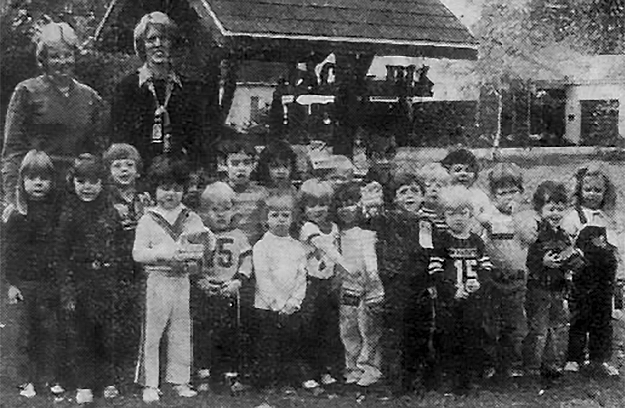Date: November 25, 1981
Location: Carbondale, IL
By: —
Newspaper: Southern Illinoisan
Page: 3
Peter Ketelaars is a missionary in the age of high technology.
He’s a brother of the Roman Catholic Order of St. Francis, but he doesn’t quite fit the image of a robed and tonsured friar, solemnly pacing the stark stone corridors of your local monastery.
And although he’s been a missionary for the past 14 years, you’re not likely to find him brandishing a Bible and preaching the gospel the the heathen, either.
The 39-year-old Ketelaars is more at home dressed in shorts and sandals and seated at his workbench, puzzling out the diagnosis and cure for an ailing piece of electronics gear or helping a group of Indonesian villagers work out the best way to wire their villages for electricity.
These days you’d be more likely to find Ketelaars in the student’s seat of a single-engine Cessna airplane in the air over Southern Illinois, happily discussing the fine points of short-field takeoffs and landings with his flight instructor.
Ketelaars is adding another skill to a collection of unexpected techniques he and other Franciscans use in their mission to the Indonesian province of Irian, the west end of the island of New Guinea.
The island north of Australia was the site of savage jungle combat between Allied and Japanese troops during World War II. Then the jungle terrain took as high a toll on troops as the enemy.
It hasn’t gotten any easier in the decades since peace came to the island’s rugged mountains and sometimes impenetrable jungles.
Before they began using radios and airplanes to connect missionaries in the island’s roadless interior with their headquarters in the coastal city of Sentani, the trek to or from isolated mountain villages used to take weeks or months. It was always an open question whether or not the missionaries would make it safely. Supplying emergency medical care was impossible.
Now it’s an instant by electronics or a matter of minutes or hours by air from the coast to any of the 500 or so airstrips the missionaries have carved out of the forested valleys.
Ketelaars says flying has become almost essential to the order’s missionary work on the island.
“If we stop flying there, we stop the mission,” Ketelaars said. “We never have enough pilots, it seems.”
The order’s missionary contingent in Indonesia includes doctors, nurses, agriculture and community development experts, as well as more traditional religious missionaries. Ketelaars is a specialist in electronics maintenance and electric power systems.
A Franciscan since 1969, Ketelaars has been a member of the order’s Irian mission since 1967.
He’s learning his airborne skills through the flight-training program at Southern Illinois University-Carbondale’s Air Institute and Service, based at the Southern Illinois Airport near Carbondale. SIU-C’s flight-training program has long had close ties to missionary work through the former director of SIU-C’s Aviation Technologies program, E.A. (Tony) DaRosa, and the Wings of Hope medical missionary group. DaRosa has been technical advisor to the aviation-assisted missionary group.
Wings of Hope has pilots and aviation support specialists working with missions in Central America, Indonesia and other remote regions. Ketelaars’ SIU-C flight training was arranged through Wings of Hope and the Aviation Missions Association, a four-diocese group of Catholic missions in Indonesia.
Ketelaars plans to get his commercial pilot’s license as well as ratings for instrument flight and multi-engine aircraft during the year or so he’ll be at SIU-C. He started his training in September. His instructors think it’ll be a breeze.
“He’s working into becoming a very good pilot,” says SIU-C flight instructor James Harlan.
Ketelaars says he enjoys learning to fly, but he’s looking forward to getting back to Indonesia.
